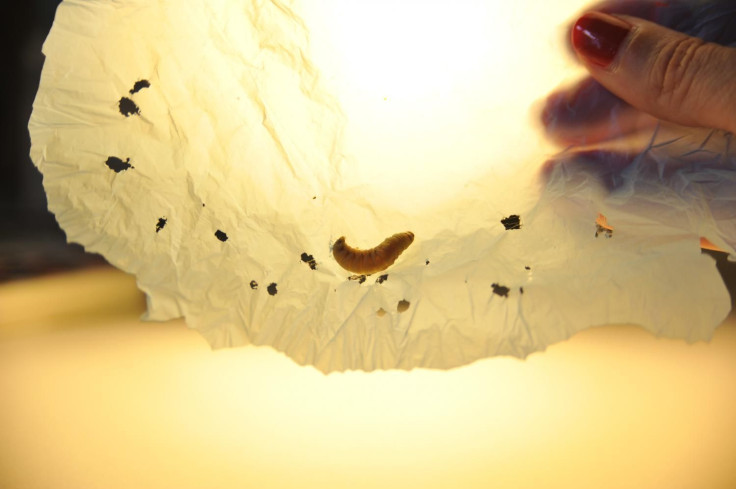Caterpillars Saving The Environment: Worm Parasite Could Stop Plastic Bag Pollution

Caterpillars might hold the key to Earth’s plastic pollution problem. But not the kind that turn into butterflies — the kind that are a parasite to bees.
The larva of a common insect can break down the chemical bonds in a plastic bag, when it’s not busy eating beeswax, so it could give scientists an answer to the immense plastic buildup that threatens the environment. The synthetic polyethylene, the most commonly used material in plastic packaging, is not biodegradable but the wax moth larva quickly breaks it down, according to a study in the journal Current Biology. When wax worms were left alone with polyethylene, “holes started to appear after 40 minutes” and after 12 hours, 100 worms broke down 92 milligrams of plastic.
How does this happen? The researchers say the worms, the young of the wax moth Galleria mellonella, typically feed on beeswax in beehives, and through that process break down bonds in the beeswax in a similar way to how they do with polyethylene.
Read: Here’s What the U.S. Looked Like Before Environmental Laws
“Given the fast rate of biodegradation reported here, these findings have potential for significant biotechnological applications,” the authors wrote.
Plastic, and plastic bags in particular, are piled high in landfills and pollute the environment — they can be found in oceans and other habitats and pose a danger to wildlife.
The University of Cambridge, which collaborated with the Spanish National Research Council on the research, said in a statement that the discovery of the plastic-munching worms came when one scientist, who is also a beekeeper, went to remove the parasite from her hives. “The worms were temporarily kept in a typical plastic shopping bag that became riddled with holes.”
It’s possible what breaks down the plastic is in the worms salivary glands or its gut.
“If a single enzyme is responsible for this chemical process, its reproduction on a large scale using biotechnological methods should be achievable,” first author Paolo Bombelli, from Cambridge, said in the statement. “This discovery could be an important tool for helping to get rid of the polyethylene plastic waste accumulated in landfill sites and oceans.”
See also:
© Copyright IBTimes 2024. All rights reserved.











